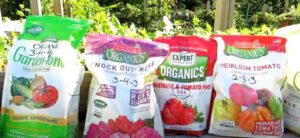Hey there, plant lovers! Ever stood in the fertilizer aisle, scratching your head about whether to go for regular or Semi-hydroponic fertilizer? You’re not alone. Today, we’re breaking down the differences between these two types of fertilizers.
Whether you’re growing succulents or diving into the world of semi-hydroponics, understanding your fertilizing options can make or break your green thumb game.
Summary
Semi-hydroponic Fertilizer vs. Regular Fertilizer
- Regular fertilizers are for soil-grown plants, semi-hydroponic fertilizers are for soil-less setups.
- Regular fertilizers rely on soil microbes to break down nutrients for plants.
- Semi-hydroponic fertilizers offer instant nutrient absorption, no soil needed.
- Soil fertilizers are slow-release, Semi-hydroponic ones offer immediate supply.
- Regular fertilizers often cheaper upfront but come in larger quantities.
- Semi-hydroponic fertilizers may cost more initially but can be more efficient over time.
- Soil fertilizers may require soil testing and pH adjustments, Semi-hydroponic fertilizers could need water testing and other gear.
Regular Soil Fertilizers

Let’s start with regular fertilizers designed for soil-based plants.
When you use regular fertilizers in soil, it’s not just the plant that’s feasting on those nutrients. The soil is alive! Yup, it’s got its own little world of bacteria, worms, and other tiny critters. These micro-organisms work to break down the fertilizer, turning it into bits that are easy for your plants to gobble up.
Why It Matters
You might be wondering, “Why should I care?” Well, some nutrients in regular fertilizers aren’t ready for your plant to absorb right away. These need a little help from the soil’s busy micro-world.
Once broken down, the nutrients become more accessible for your plant, making them a good match for soil-based plants.
Semi-Hydroponic Fertilizers

Switch gears to semi-hydroponic fertilizers, and you’re in for a different ride. In hydroponic setups, there’s no soil, so no busy little micro-world to help out. Everything’s clean, maybe even sterilized.
When you use hydroponic fertilizers, the nutrients are ready to be absorbed by your plants, and no waiting is required.
Why It’s Different
The point here is, Semi-hydroponic fertilizers are ready to use ‘as is’. They don’t need a bunch of soil critters to make them plant-ready.
If you use soil-based fertilizer in a hydroponic setup, you’re asking for trouble. Your plant won’t be able to absorb the nutrients, and you might even see it start to wilt or die.
Slow Release vs. Instant Absorption
Another thing to note is how these fertilizers release nutrients.
Soil fertilizers usually offer a slow, steady supply because they need to be broken down.
On the other hand, Semi-hydroponic fertilizers are like an instant nutrient boost, immediately available for plant absorption.
Cost Comparison
Upfront Costs
Regular Fertilizer
When you go shopping for regular fertilizer, you’ll often find it in large bags or containers. The price may appear reasonable at first glance, especially when compared to hydroponic fertilizers sold in smaller quantities.
Semi-hydroponic Fertilizer
This type usually comes in smaller packages and might look more expensive right off the bat. You may also need to invest in specialized measuring equipment or pH adjusters, which adds to the initial cost.
Long-Term Value
Regular Fertilizer
Although the upfront cost is generally lower, keep in mind that you’ll be using this fertilizer over extended periods. Many regular fertilizers are slow-release, meaning you’ll need to reapply them every few weeks or months. The costs can add up, not to mention the time and effort required for regular application.
Semi-Hydroponic Fertilizer
While the initial outlay can be higher, the efficiency and potency mean you’ll be using less over time.
Semi-hydroponic fertilizers are concentrated, allowing you to use smaller quantities.
Plus, the immediate availability of nutrients often results in faster plant growth, potentially giving you a quicker return on your investment.
Hidden Costs
Regular Fertilizer
Don’t forget about the possible expenses tied to soil testing, especially if you’re striving for optimal soil health. You may also need to invest in soil amendments like lime or sulfur to adjust pH levels.
Semi-hydroponic Fertilizer
In Semi-hydroponic systems, you’ll often need to account for the costs of water testing kits, pH adjusters, and electrical costs for circulating pumps. Additionally, the price of replacing nutrient solutions can be a recurrent expenditure.
Conclusion
Long story short, if you’re into Semi-hydroponic, go for fertilizers designed for that setup. If you’re sticking with good old soil, then traditional fertilizers are your best bet. Both types have their pros and cons, but the key is to use what’s right for your specific plant needs.
So there you have it! Hopefully, this clears up any confusion. Remember, using the right fertilizer for your setup is crucial for plant health. Happy planting! 🌱

